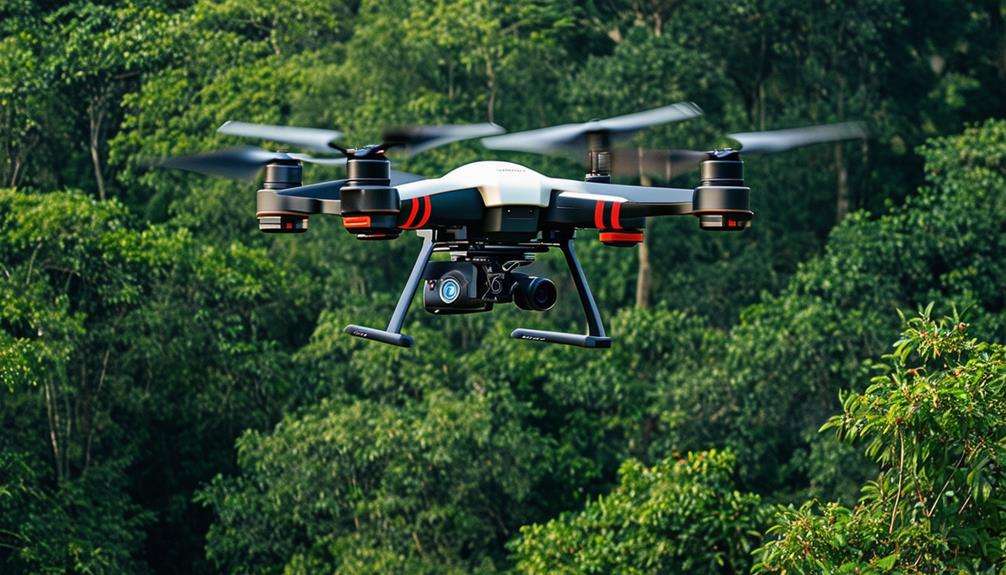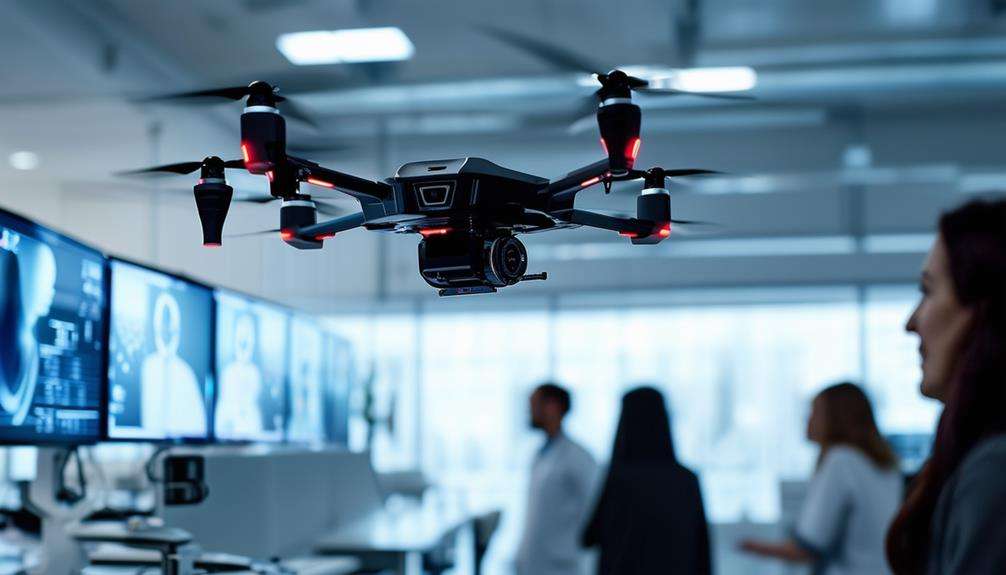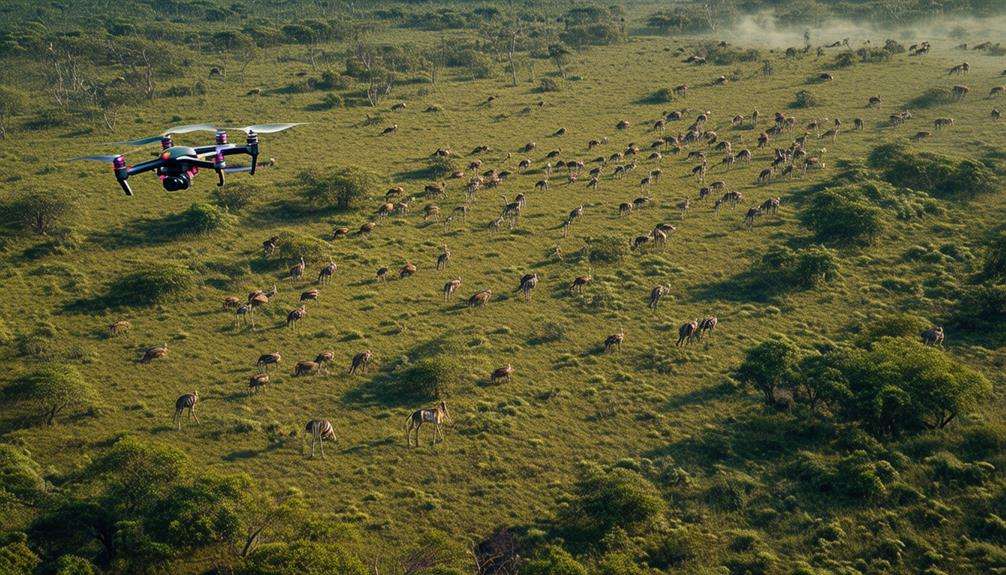How Drones Are Transforming Insurance Claims
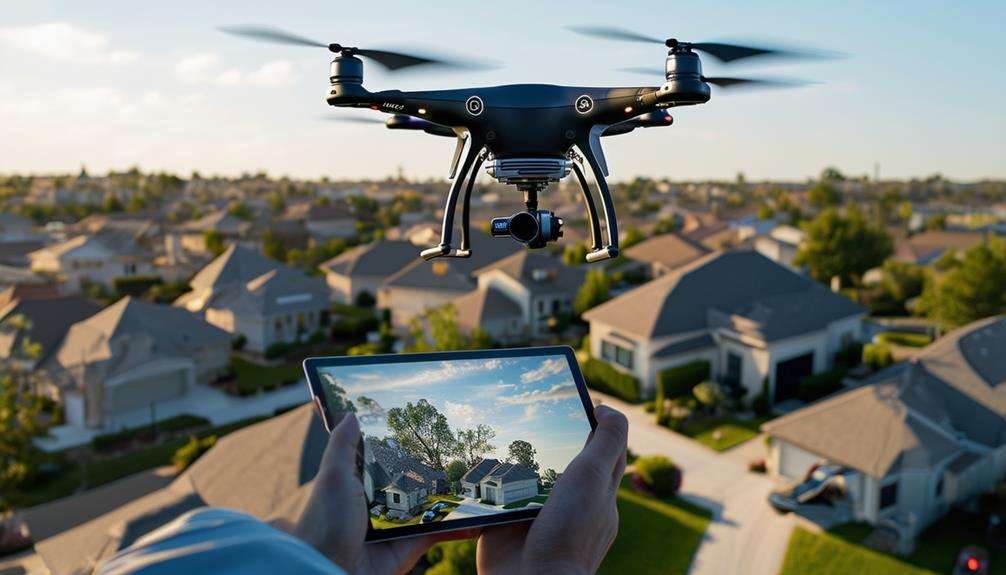
Imagine you're an insurance adjuster evaluating damage after a major storm. Instead of spending days on-site, climbing ladders, and taking manual measurements, you deploy a drone that completes the job in a fraction of the time.
This isn't just about saving hours; it's about enhancing accuracy, reducing costs, and preventing fraud. High-resolution imagery and advanced sensors provide unprecedented detail, making your evaluations more precise.
But how do these benefits translate into real-world applications, and what are the potential challenges you might face? Let's explore the transformative impact of drones on the insurance industry, ensuring we cover the practical benefits, potential obstacles, and future implications.
Enhancing Data Collection
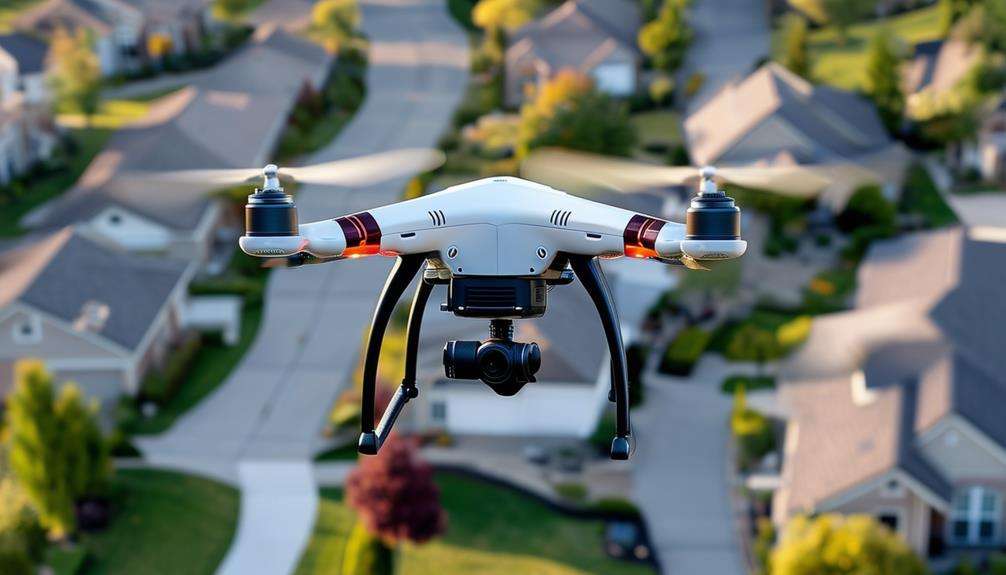
Drones are transforming data collection for insurers by enabling detailed and efficient property risk assessments. Utilizing drone technology for insurance inspections allows for the collection of high-quality data that traditional methods may miss. This advanced approach facilitates comprehensive damage appraisals and accurate property measurements, particularly with tools like LiDAR technology.
In the U.S., drones play a crucial role in conducting pre-loss inspections and assessing property conditions. Capturing extensive aerial views helps identify potential hazards and make informed coverage decisions. This enhances the risk assessment process and enables the provision of tailored coverage options for clients.
Additionally, the precise data gathered through drones supports accurate pricing of insurance policies, minimizing the likelihood of disputes during claims processing. Drones streamline the inspection process, making it faster and more cost-effective. Whether evaluating roof damage after a storm or documenting property conditions for underwriting, drones ensure the availability of reliable data, enhancing overall operational efficiency and trustworthiness in the insurance sector.
Improving Accuracy
Drones significantly enhance the accuracy of insurance claims by capturing high-resolution images that reveal fine details. This precise damage assessment minimizes human error, resulting in more reliable evaluations. Consequently, you can expect better pricing accuracy and a reduced likelihood of underpricing claims.
High-Resolution Imagery
By utilizing high-resolution imagery, insurance companies can significantly enhance the accuracy of their claims assessments. Drones equipped with advanced cameras capture detailed images of property damage, improving the precision of risk evaluations. This technology enables insurers to identify intricate details that human inspectors might miss, leading to more precise evaluations and fairer insurance claims.
High-resolution imagery from drones offers numerous advantages:
- Detailed images: Captures fine details of property damage, essential for precise assessments.
- Improved accuracy: Enhances the overall precision of insurance claims by providing clear and detailed visuals.
- Efficient risk assessment: Helps identify potential risks more effectively, leading to better-informed decisions.
- Time-saving: Reduces the time required for manual inspections, speeding up claim processing.
- Cost-effective: Minimizes the need for repeat visits and additional inspections, reducing operational costs.
Precise Damage Assessment
Leveraging advanced imaging and photogrammetry, insurance companies can achieve unparalleled accuracy in damage assessments. Drones capture detailed images of property damages that are often challenging to obtain through traditional methods. These aerial devices are particularly adept at evaluating complex structures and tall buildings, providing precise damage assessments that streamline the insurance claims process.
When a drone surveys a damaged property, it gathers high-resolution images and uses photogrammetry to generate accurate 3D models. These models facilitate a thorough analysis of damages, ensuring no detail is overlooked. This level of precision allows for more accurate damage extent determination and repair cost estimation.
The use of drones leads to significant cost and time savings. Drones allow for detailed inspections without the need for ladders or scaffolding, minimizing human error and accelerating the claims process. Accurate damage assessments enable better resource allocation, benefiting both the insurer and the insured.
Reduced Human Error
Drones significantly reduce human error in insurance claims by capturing precise and detailed images of property damage. Utilizing drones provides high-resolution photos and videos that offer clear, objective data, eliminating the subjective assessments often associated with traditional methods. By minimizing human involvement, drones enhance the accuracy and reliability of the information collected, resulting in more precise evaluations of risk and damage.
This precise data allows insurers to make informed decisions, reducing the likelihood of errors in claim settlements. This not only benefits insurers but also ensures that policyholders receive fair and accurate compensation.
Key benefits include:
- High-Resolution Imaging: Drones capture images that are significantly more detailed than human observations.
- Objective Data: The use of drones removes subjectivity, thus reducing the potential for human error.
- Efficient Data Gathering: Drones gather detailed data quickly and efficiently, expediting the claims process.
- Accurate Risk Assessment: Insurers can better assess risks and damages, leading to more accurate claims.
- Improved Claim Settlements: Enhanced data accuracy results in fairer claim settlements, thereby reducing disputes.
Increasing Efficiency
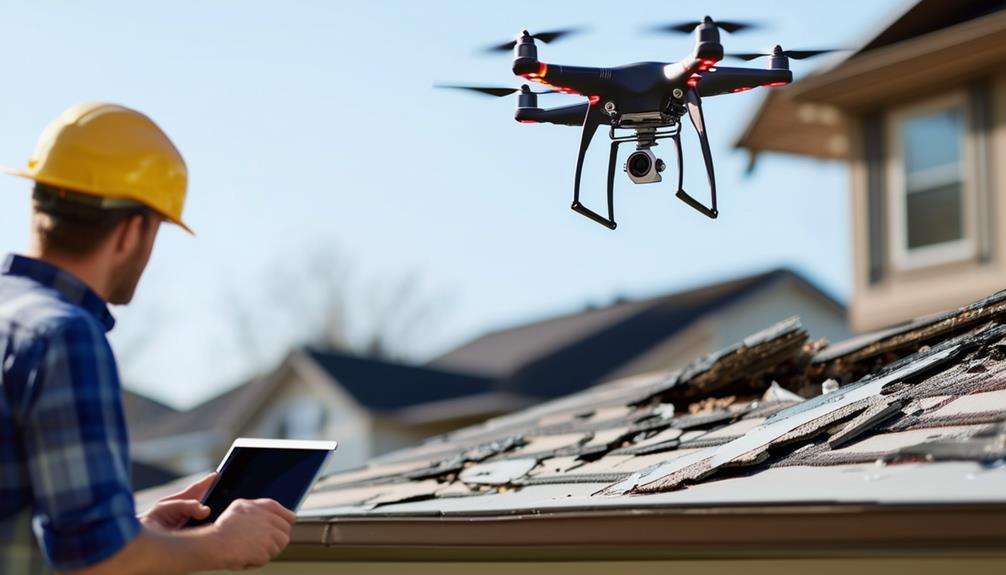
Using drones in insurance claims accelerates damage assessments, expediting the entire claims process. These aerial tools streamline operations, significantly reducing time and costs. Real-time data capture and cloud-based storage enable efficient team collaboration, ensuring quicker settlements for policyholders.
Faster Damage Assessment
Insurance companies can now expedite damage assessments by using drones, reducing evaluation time from days to mere hours. Leveraging drone inspection technology enables efficient damage assessment, revolutionizing claims processing. This capability is crucial, particularly after natural disasters, where quick actions are essential for prompt customer support.
Drones facilitate the collection of detailed imagery, offering accurate and comprehensive views of the damage. This not only streamlines risk management but also accelerates claims processing. Insurers can respond to claims more swiftly, ensuring customers receive timely assistance without unnecessary delays.
Key advantages of using drones for damage assessment include:
- Rapid deployment: Drones can be quickly dispatched, accessing affected areas faster than traditional methods.
- High-resolution imagery: Drones provide precise documentation of damage through high-quality images and videos.
- Enhanced safety: Damage can be assessed without risking personnel, especially in hazardous conditions.
- Cost reduction: Minimizing the need for manual inspections lowers operational expenses.
- Efficient coverage: Drones can cover large areas effectively, ideal for widespread damage scenarios.
Streamlined Claim Processing
Harnessing drone technology, insurers are significantly enhancing the efficiency of claim processing. Utilizing drones for claim assessments streamlines the entire process, reducing the required time by up to 40%. This acceleration allows for faster claim settlements, thereby improving customer satisfaction.
Drones enable the handling of a higher volume of claims with increased accuracy. Insurers using drones report a 90% efficiency boost, allowing for more claims to be processed in less time without sacrificing quality. Additionally, drones reduce human errors by 70%, leading to quicker and more effective resolutions.
Cost savings are another major advantage. Integrating drones into the claim processing workflow can save up to $6,000 per claim. These savings can be redirected to other crucial areas of the business, further enhancing overall efficiency.
Reduced Operational Costs
Drones can significantly reduce operational costs in insurance claims by streamlining data collection and minimizing the need for field adjusters. Utilizing drones for damage assessment saves both time and money. It's estimated that drones could save the insurance industry up to $7 billion annually by expediting claims processing and enhancing efficiency.
When it comes to data gathering, drones surpass traditional methods. They can rapidly capture high-resolution images and videos of the damage, providing a comprehensive overview that would take much longer for a human adjuster to compile. This increased speed and precision result in faster claims processing and improved cost-effectiveness.
Here are key ways drones enhance efficiency and reduce operational costs:
- Reduced Deployment of Field Adjusters: Fewer on-site visits lower travel and labor expenses.
- Accelerated Data Gathering: Quick data capture speeds up the entire claims process.
- Improved Accuracy: Detailed aerial views minimize errors in damage assessment.
- Enhanced Safety: Drones can access difficult-to-reach areas, reducing risk to human adjusters.
- Cost-Effectiveness: Lower operational costs translate to higher profit margins.
Conducting Detailed Inspections
Thanks to high-resolution imaging capabilities, drones can conduct thorough property inspections, ensuring accuracy in risk assessments and claim evaluations. Drones excel at capturing high-quality images that human eyes might miss, making them particularly advantageous for property damage assessments due to the detailed and comprehensive data collected.
Drones can access hard-to-reach areas, such as rooftops and complex structures, without risking human safety. This enhances the efficiency and precision of risk assessments. By providing a bird's-eye view, insurance companies can evaluate claims with greater confidence and accuracy.
Here's a quick comparison of traditional inspections versus drone inspections:
| Aspect | Traditional Inspections | Drone Inspections |
|---|---|---|
| Image Quality | Standard resolution | High-resolution imaging |
| Accessibility | Limited by human reach | Hard-to-reach areas covered |
| Time Efficiency | Time-consuming | Rapid and efficient |
| Risk Factors | Potential human risk | Minimal human risk |
Assessing Risks
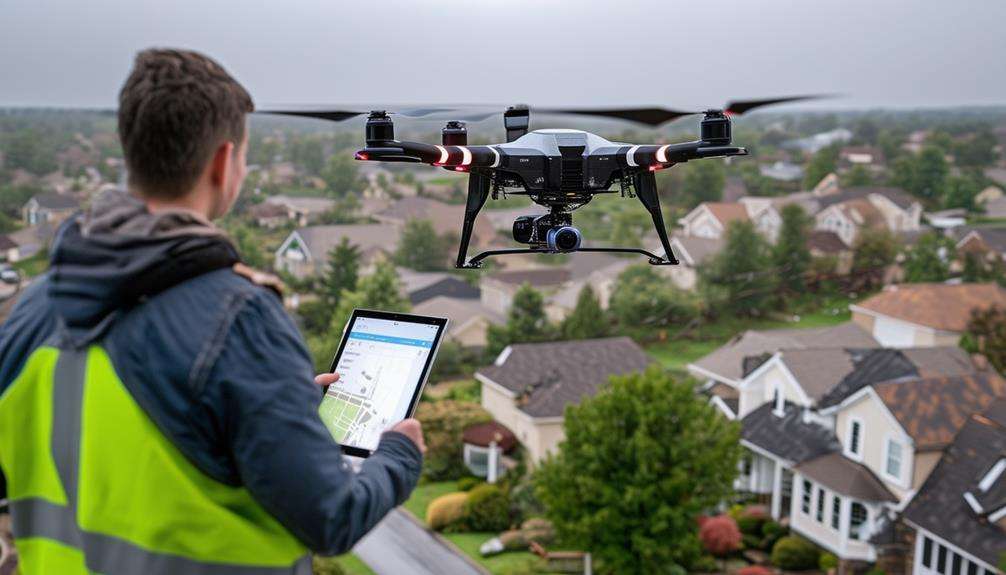
Insurance companies are now able to assess risks with greater precision by utilizing drones to capture detailed images and detect issues that might be missed by human inspectors. This technological advancement significantly enhances risk assessment accuracy, enabling insurers to make more informed decisions. Drones can access hazardous areas that would pose risks to human inspectors, ensuring thorough evaluations without compromising safety.
By leveraging drones, insurers can efficiently evaluate hard-to-reach buildings, such as tall and complex structures. This not only speeds up the risk assessment process but also optimizes insurance operations, leading to cost savings.
Furthermore, drones aid in fraud detection by providing detailed imaging and photogrammetry at accident sites. This precise documentation ensures accurate records, reducing the likelihood of fraudulent claims.
Key benefits of using drones for risk assessment include:
- Improved accuracy: Detailed images capture subtle issues.
- Enhanced safety: Drones can access hazardous areas without endangering human inspectors.
- Increased efficiency: Hard-to-reach buildings are assessed quickly.
- Better fraud detection: Detailed imaging helps identify discrepancies.
- Optimized operations: Streamlined processes save time and costs.
Preventing Fraud
Capturing detailed images at accident sites is crucial for verifying the authenticity of insurance claims. Drones can capture high-resolution images that provide clear visual evidence, making it easier to detect staged accidents. This detailed imaging helps insurers differentiate between legitimate and fraudulent activities, thereby preventing fraud.
Drones also perform property inspections both before and after incidents, supplying accurate data essential for examining insurance claims. Detailed imaging and photogrammetry allow insurers to spot inconsistencies and discrepancies, ensuring that customers cannot easily deceive insurers. Any attempts at fraudulent activities are swiftly identified.
Consider the following table highlighting how drones assist in preventing fraud:
| Drone Usage | Benefit | Outcome |
|---|---|---|
| Accident Site Imaging | High-Resolution Imaging | Detecting Staged Accidents |
| Pre-Incident Inspections | Accurate Data Collection | Verifying Authenticity of Claims |
| Post-Incident Inspections | Clear Visual Evidence | Identifying Fraudulent Activities |
| Photogrammetry | Detailed Analysis | Reducing Risk of Fraudulent Claims |
Rapid Post-Disaster Assessments
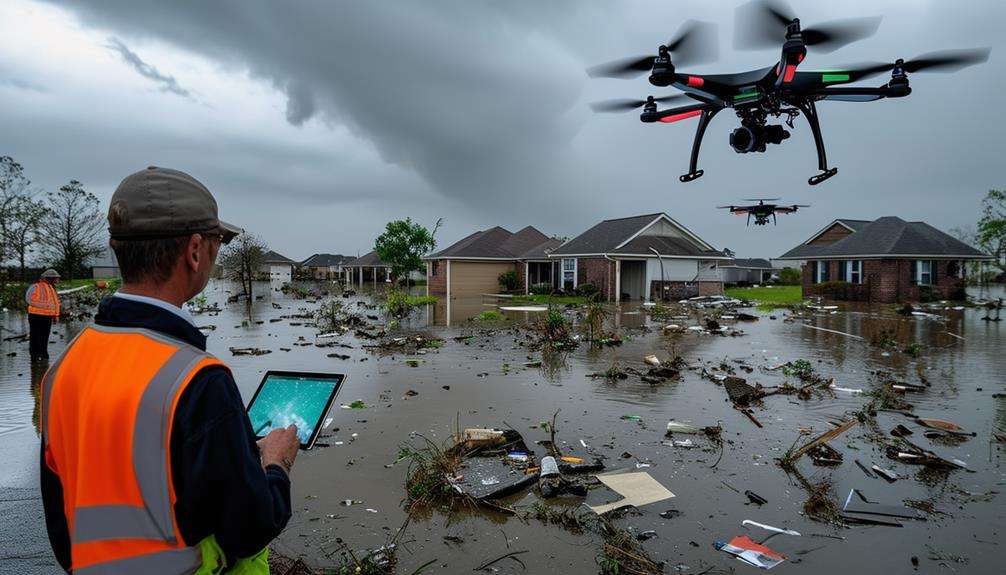
In the aftermath of natural disasters, drones can expedite damage assessments by up to 10 times compared to traditional methods, enabling quicker and more accurate claims processing. Imagine a vast area devastated by a hurricane or an earthquake; traditional methods would require days or even weeks to manually inspect and document the damage. However, with drones, rapid assessments can be achieved, covering large zones swiftly and efficiently.
One of the most significant advantages of drone inspections is their ability to provide precise information to multiple adjusters simultaneously. This streamlined approach accelerates claims processing and supports efficient loss assessment. For instance, following Hurricane Irma, drones mapped 300 buildings in just 10 days, a task that would have taken much longer using conventional methods.
Here's how drones improve post-disaster assessments:
- Speed: Drones assess damage up to 10 times faster.
- Coverage: They can cover large disaster zones swiftly.
- Precision: Provide accurate data for multiple adjusters.
- Efficiency: Streamline the entire claims processing workflow.
- Safety: Reduce the need for human inspectors in hazardous areas.
Pre-Loss Property Evaluations
Drones are transforming the way insurers assess risks by conducting detailed pre-loss property evaluations. By deploying drones to survey properties, insurers can accurately identify potential hazards such as flooding, fire risks, and structural weaknesses before incidents occur. This proactive strategy enables risk mitigation based on precise data collected from drone footage.
Drones capture high-resolution images and videos of the property's current condition during these evaluations. This comprehensive visual record helps insurers establish a clear baseline, facilitating the detection of changes or damages over time. With this information, insurers can better understand and address risks, enhancing overall risk management.
Additionally, pre-loss evaluations using drones are crucial in fraud prevention. Detailed, timestamped images of the property before any loss enable insurers to easily verify the authenticity of claims. This foundational data ensures that any reported damages can be compared accurately to the pre-loss condition, reducing the likelihood of fraudulent claims.
Accelerating Claims Processing
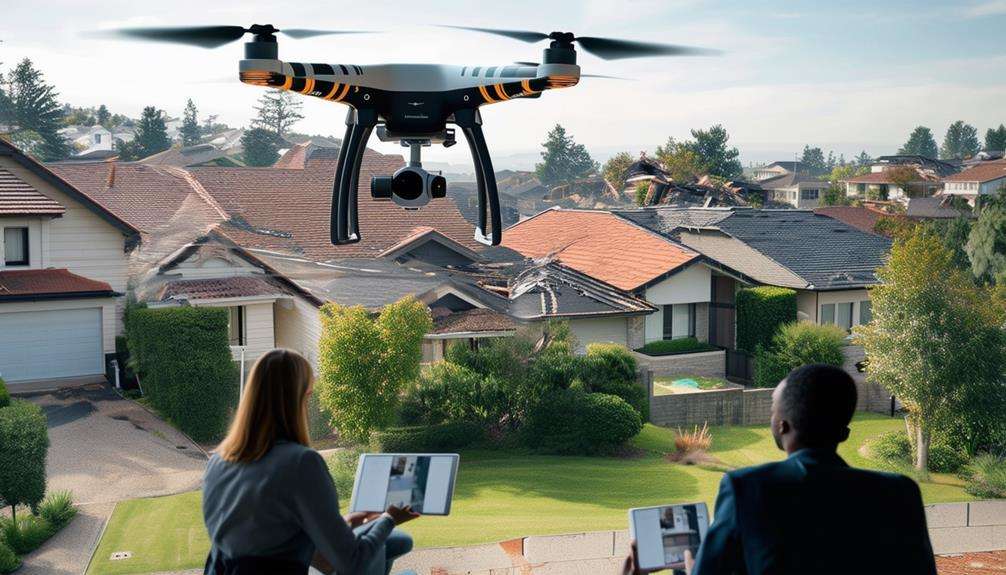
Insurance companies have significantly accelerated claims processing by integrating drones into their workflows. By utilizing drones, insurers can collect real-time data, leading to quicker and more accurate claims adjudication. This efficiency is remarkable—claims processing times have been reduced by up to 90% in some cases.
With drones, property inspections become substantially easier. Instead of waiting days or weeks for a traditional inspection, the task can be completed in a fraction of the time. This results in quicker settlements and increased customer satisfaction. Companies using drones have also reported a 40-50% increase in staff efficiency in handling claims.
The benefits are clear:
- Efficiency: Drones streamline the entire claims process, reducing the workload on staff.
- Real-time Data Collection: Accurate quotes are generated quickly, enhancing the speed and accuracy of claims processing.
- Property Inspections: Inspections are completed faster than ever before, minimizing delays.
- Cost Savings: Reduced processing times and increased efficiency lead to significant cost savings.
- Customer Satisfaction: Faster claims processing results in happier clients, enhancing customer loyalty.
Conclusion
Drones are transforming insurance claims by making data collection faster and more accurate. They help reduce errors, expedite processing, and lower costs, all while enhancing customer satisfaction.
Drones also play a crucial role in fraud prevention and offer detailed inspections and rapid post-disaster assessments. By leveraging drone technology, the insurance industry is becoming more efficient and reliable, ensuring quicker and more precise settlements.


